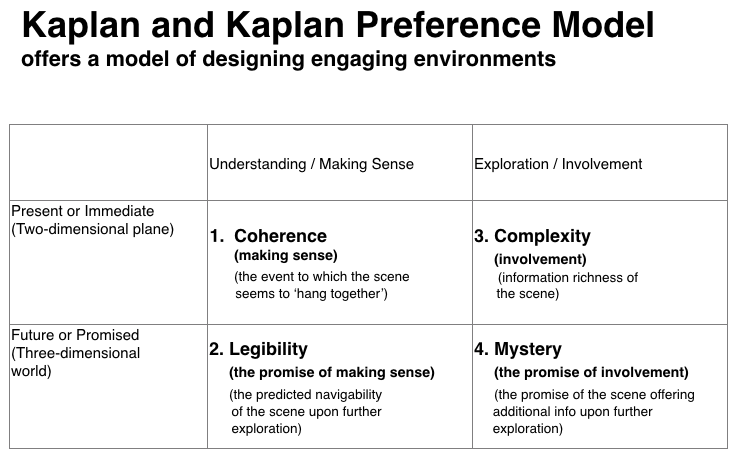Key Feng Shui Principles and Concepts
Feng shui is a discipline that studies the relationship between people and environments (similar to environmental psychology) with the aim of optimising working environments to boost focus and performance as well as job satisfaction and reduce stress and staff turnover among other things.
“Our day-to-day concepts do not capture what a concept is because they do not allow the full force of what a concept can do.”
Dr. Claire Colebrook, Cultural theorist
Energy and energy flow
Qi or chi or energy and energy flow is the key concept in feng shui. Human attention and focus is attracted and moderated by physical elements such as paths, focal points, shapes, colours, plants, lighting and so on.
Yin & Yang
Yin and yang is about balancing complimentary elements on every level and avoiding too much of anything. For example, angularity should be balanced with curvilinearity, warm colours with cooling colours, natural daylight with artificial lighting, etc.
5 elements
According to oriental philosophy, there are five elements: water, wood, fire, earth and metal which are based on seasons and have corresponding colours, shapes, directions and materials. The aim of feng shui is to have a balanced combination of all the elements in any workspace depending on the needs of people working there.
Bagua model
In feng shui, different space can represent different aspects of business such as clients, partnerships, collaboration, innovation, projects, legacy, teamwork, wealth and profits, expertise, success and reputation and so on. Depending on the needs of the company these areas can be energised to boost the corresponding aspects.
Shapes
Research suggests that people have a preference for curvilinearity vs. angularity. Adding round or oval shapes will naturally balance angular environments. Sharp corner and patterns should be minimised.
Positioning
How workstations are positioned in space can affect the performance of the workforce. Sitting in ‘a power/commanding position’ where one has the support of a wall and a clear view of doors is preferred. Sitting with one’s back to the door can instil feelings of insecurity and anxiety.
Workplaces as metaphors and semiotics
Feng shui works through energies, symbols, metaphors, affects, sensations, narratives, anchors, images and expectations. Semiotics is a study of meaning-making and is a very useful tool to help not only to elicit people’s perceptions of any workplace but also to manage those perceptions.
How people perceive their workplaces will affect their performance, work satisfaction, staff retention and so on.
A sense of a place / a sense of community
A sense of belonging is one of the most important aspects of making offices work. People thrive in places where a sense of community and collaboration is present implicitly and explicitly.
Biophilia
Biophilia effect suggests that people do well and thrive in natural environments. Including as many natural or naturally-looking elements such as plants, etc and themes (photo wallpapers with nature) will enhance the biophilia effect in the new office.
Kaplan & Kaplan preference model (from environmental psychology)
Kaplan and Kaplan’s preference model (1989) describes four basic preference factors for any space i.e. coherence, legibility, complexity and mystery.
Fractality
Recursive and embedded decorative design elements can enhance the fractality of the place. Our bodies have fractal patterns so we feel better in fractal environments ie nature. Biophilia or natural elements are good examples of utilisation of fractality.
A fractal is a mathematical set that usually displays
self-similar patterns (Benoît Mandelbrot, 1975).
The concept of fractal extends beyond self-similarity and can include detailed patterns repeating themselves and is a good measure of the complexity of any environment.
Wabi Sabi
Wabi Sabi is a Japanese concept of seeing the beauty in imperfection and a good reminder that physical things age and if they’re allowed to age gracefully, they can make the place look more inviting, welcoming and relaxing and add important longevity and legacy aspect to the feel of the space. Embrace imperfections of any workspace by reframing them as wabi-sabi.
Design
Good design is good feng shui and vice versa.
Asian (feng shui) mindset Vs western mindset
It is common practice in Asia for businesses to consult a feng shui consultant when making financial decisions. The research has shown that the overall thinking style, beliefs and perceptions of people in Asia is to look for negative aspects first (the ‘half empty’ glass as opposed to ‘half full’ one); i.e. they tend to focus on what is wrong with it something before they look at what is working. It does not mean that they are more negative than others; it is just the way they look at life.
Collective vs Individualistic
Field vs Object
Complex vs Simple
Relationships vs Categories
Verbs vs Nouns
Circle vs Line
Resonance/harmony vs Control
Rhizomatic vs Arboric
Holistic vs Analytical
Dynamic vs Static
(Source: The Geography of Thought, How Asian and Westerners think differently and why by Richard E Nisbett, 2003)

